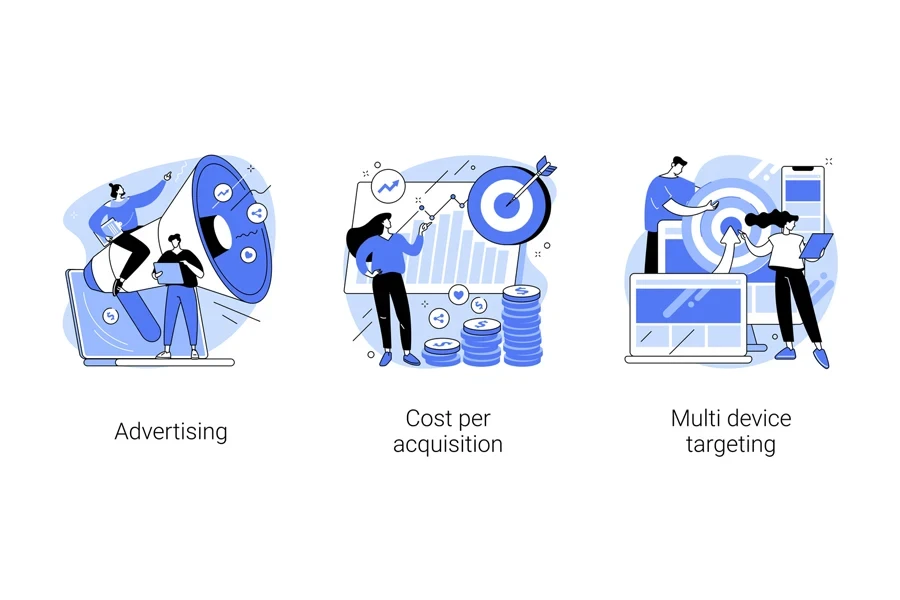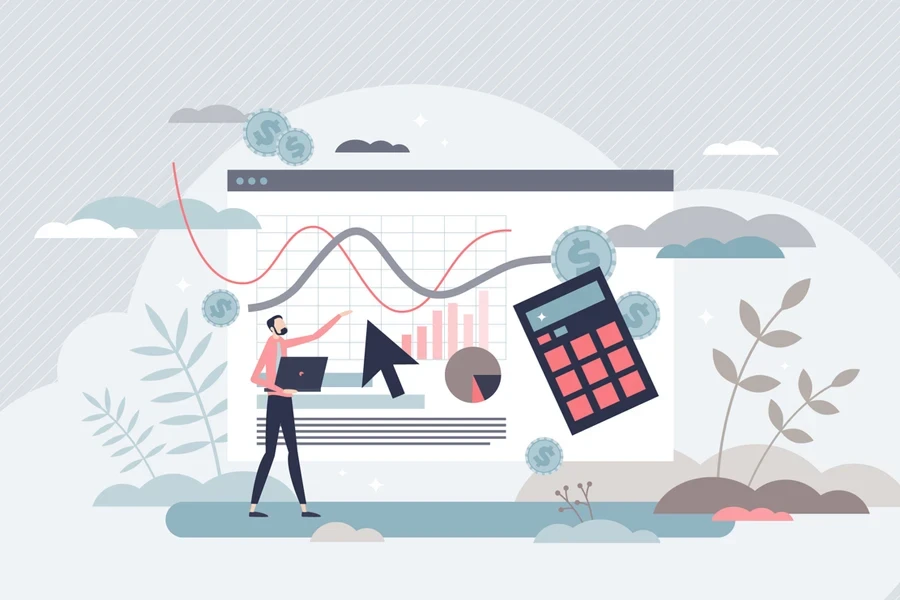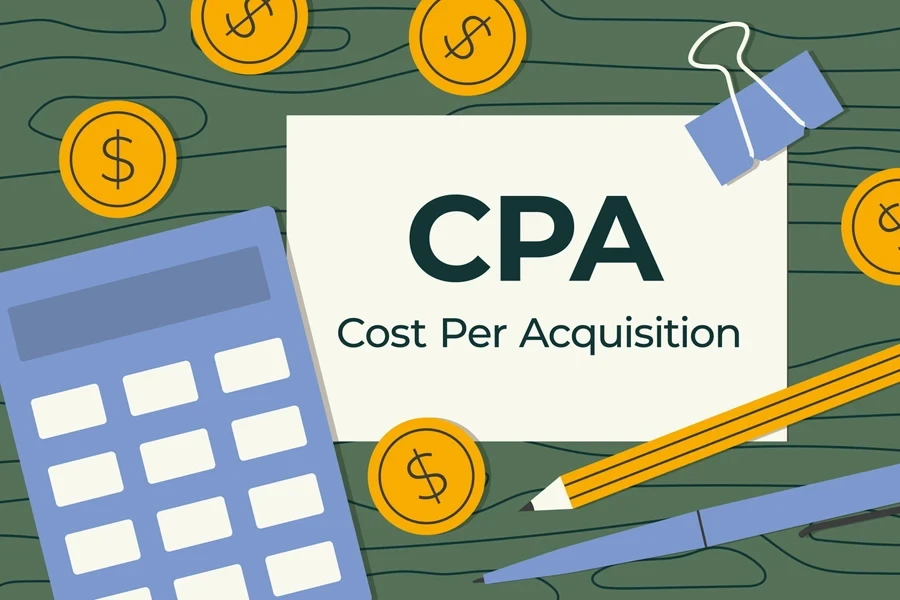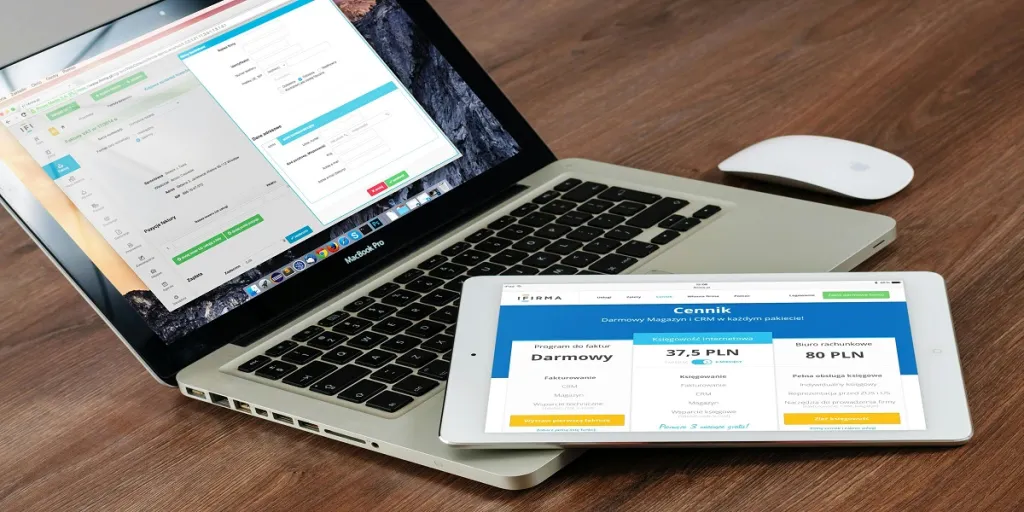Imagine running a small online boutique and spending a chunk of your budget on a paid ad campaign. When the campaign ends, you realize you’re not entirely sure how many new clicks turned into real, paying customers—or whether all that ad spending was worthwhile. That’s exactly the puzzle cost per acquisition (CPA) is designed to solve.
CPA is a marketing metric that tracks how much you spend, on average, to turn a person into a paying customer (or, in some cases, a qualified lead). It’s essentially a way to tie a specific cost to a particular action, like someone hitting the “Buy Now” button, signing up for your newsletter, or completing any other goal you deem important to your business.
This article will explore cost per acquisition, why it’s essential, and how you can keep yours in check as you grow.
Table of Contents
Understanding cost per acquisition vs. other metrics
Why cost per acquisition matters
3 Kkey influences that affect your CPA
1. Your marketing channel
2. Campaign budget
3. How you define “acquisition”
4. Product pricing & complexity
How to calculate cost per acquisition
Tips for lowering your cost per acquisition
1. Personalize your marketing
2. Optimize your landing pages
3. Streamline checkout
4. Identify purchase intention
5. Retarget interested shoppers
Final thoughts
Understanding cost per acquisition vs. other metrics

If you’ve spent time in marketing, you’ve probably encountered metrics like customer acquisition cost (CAC) or conversion rate. On the surface, these can look similar to CPA, but there are a few differences worth noting:
Customer Acquisition Cost (CAC) takes all your marketing spend for a certain period (including salaries, software, overhead, etc.) and divides it by the total number of new customers in that same timeframe. This gives you a broad snapshot of how expensive it is to bring someone on board.
Cost Per Acquisition (CPA) is narrower. Typically, CPA is tied to a particular campaign (like a Facebook ad or an email sequence). You divide the cost of that specific marketing push by the resulting conversions. Sometimes, “conversion” means a sale; other times, it might be a sign-up, a download, or another action.
The bottom line is that CAC helps you see the big picture of acquiring customers, while CPA allows you to see how effectively each campaign turns a prospect into a convert. Both metrics are useful, but CPA is especially handy when you want to zero in on specific marketing efforts’ success (or lack thereof).
Why cost per acquisition matters

CPA offers several benefits businesses can’t ignore. These include:
- Efficiency: CPA highlights which campaigns give you the biggest bang for your buck. If your paid search ads deliver a CPA of $10 while your influencer campaigns deliver $50, you’ll know where your money is doing more work.
- Clarity: It’s one thing to look at site traffic or social media likes, but those don’t necessarily translate to profit. CPA slices through that noise and points to where real results are happening—i.e., actual conversions.
- Reassurance: If your CPA is within a manageable range (especially regarding your customer lifetime value (CLV)), it shows your marketing strategy is on the right track. This green light can help you scale more confidently.
- Objectivity: Few metrics are as persuasive as a clear cost-per-acquisition figure when setting budgets for the next quarter or pitching a new campaign. It doesn’t just say, “We got good traffic;” it says, “We spent $X to get Y paying customers,” which is an easy story to sell to stakeholders or team members.
3 key influences that affect your CPA

Several different factors can sway your cost per acquisition. Some of the major ones include:
1. Your marketing channel
Whether it’s Google pay-per-click ads, affiliate marketing, or sponsored Instagram posts, each platform has its own conversion rates and audience habits. However, the more crowded a channel gets, the more expensive it can be to acquire customers.
2. Campaign budget
A focused, well-targeted campaign keeps costs down since every dollar is spent reaching the right audience. However, your costs may rise initially as you expand into bigger channels or run brand awareness campaigns. The upside is even if your CPA goes up temporarily, you’re building long-term brand recognition.
3. How you define “acquisition”
For some businesses, a conversion means a purchase. For others, it could be anything valuable, like signing up for a newsletter subscription or downloading an app. Since acquisition can mean different things, your CPA may shift depending on how you define it.
4. Product pricing & complexity
If your product is expensive or requires more consideration, customers may need multiple interactions to know if they’ll purchase, which can increase your CPA. On the other hand, simpler, lower-cost items often lead to quicker decisions—sometimes after just one ad click—keeping costs lower.
How to calculate cost per acquisition

The formula for cost per acquisition is straightforward:
CPA = Total Campaign Cost / Number of Conversions
Imagine you spend $1,500 on a targeted Facebook ad campaign and end up with 50 sales. Dividing $1,500 by 50 gives a CPA of $30. You’d then compare this $30 figure to the profit you make per sale (or the CLV if you expect a new customer to return) to see if you’re in a healthy range.
If each sale nets you $100, spending $30 to acquire that sale may count as profit. But if each sale only nets you $15, it’s clear you need to either lower your CPA or raise your prices.
Tips for lowering your cost per acquisition

No matter how good your campaigns are now, chances are you’d like to bring down your CPA further so you can stretch your marketing budget. Here are some tried-and-true strategies:
1. Personalize your marketing
The more relevant your ads or emails are to a person’s interests, the more likely they are to convert. Use purchase data, browsing history, or basic demographic information to deliver personalized product recommendations and discounts. Remember that personalization leads to higher click-through and conversion rates, which can help lower CPA.
2. Optimize your landing pages
A poor landing page can ruin even the most targeted ad campaign. So, ensure your landing pages have a seamless design by including a single, focused call to action (CTA), minimal distractions, and easy-to-digest content. You’ll likely get more conversions if customers don’t have to search for the “Add to Cart” button or the sign-up form.
3. Streamline checkout
Shoppers are likelier to abandon their carts when they run into surprise fees or a complicated checkout process. However, you can prevent this by keeping things simple. Be upfront about shipping costs and offer guest checkout options. Even small improvements in the shopping experience can lead to fewer abandoned carts and lower your CPA.
4. Identify purchase intention
Ask shoppers, “How did you hear about us?” to learn which channels drove them to convert. If a particular channel keeps increasing with high conversions, consider spending more of the budget there. Conversely, if a channel consistently delivers a low conversion rate, you should scale back how much you spend on it.
5. Retarget interested shoppers
Retargeting ads help you reel back people who browsed your site or added items to their cart but didn’t buy. Because these shoppers already showed interest, the chances of converting them are higher. You could use reminders or special offers, like free shipping or a small discount code, to encourage them to finish what they started.
Final thoughts
Whether running a scrappy startup or a well-established online store, understanding your cost per acquisition (CPA) can make a big difference. It shows you which marketing strategies bring in valuable customers and might be wasting money. By keeping an eye on CPA and working to lower it (through better personalization, a smoother website experience, or smart retargeting), you’re ensuring your marketing dollars go further, turning investment into loyal customers in the long run.




